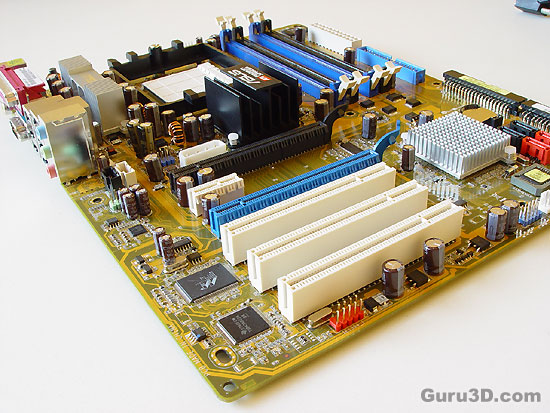Page 2
So how does Crossfire work?
First off, this: if you do decide to go the Crossfire path then please do so with the new X1000 series graphics cards. The x800/850 series biggest limitation with regards to gaming is namely a maximum resolution of 1600x1200 at 60 Hz, and trust me when I say in the next year or two high-end gamers will all be moving towards 1920x1200 or higher resolutions.
Right now for most of us being maxed out at 1600x1200 is not at all an issue, but with HD gaming around the corner and all kinds of new HD screens becoming available, that simply is not the best way to think with regards to long term PC investments. With the x800/x850 ATI had to work with existing products, which resulted into product limitations. "We can do whatever NVIDIA is doing" did not exactly go the way ATI wanted it to. The new X1000 generation however, allows exactly what ATI has in mind for Crossfire and has a far better chance in succeeding over the previous generations products.
The new CrossFire X1000 series from top to bottom is Crossfire compatible. On this series, that nasty limitation I just explained is gone as all cards and DVI connectors are able to handle Dual-Link DVI. So for example, if you have two lovely screens at 1920x1200 it'll just work fine. The X1000 series is a programmable compositing engine which is software upgradeable, so you can get very high resolution gaming with the new series.
This goes for the entire X1K series. It'll not be cheap for the high-end segment though as a primary card in the form of the X1800 XT Crossfire edition which we are testing today will cost you 599 USD alone !
Let's walk through the installation. Crossfire requires a master and slave card, the master card is a special board, whilst the slave is the usual Radeon that you can or have bought in the stores. Although you can mix among the cards I'd say for optimal performance please match the cards. However if clockspeeds differ, both boards will operate at their default clocks, there will just be the instances where the faster board will end up waiting for the slower.
What if you own an X1800 XL card ... ? Well there will be no X1800 XL Crossfire edition mastercard, so you will have to chip in 600 USD and make it work with the XT. Once you insert the CrossFire card into your system next to the Radeon X1800 XL, the CrossFire card will deactivate half of its 512MB memory in order to match up with the Radeon X1800 XL's RAM size. The Radeon X1800 XT CrossFire will maintain its higher GPU and memory clock speeds, though. However, investing in a 512 MB graphics card where only 256 MB will be used is a bit hard to swallow I think.
Not just the two cards are enough though, you of course will also need a mainboard that can manage the two cards. ATI introduced two new chipset variants of the Radeon XPRESS 200 platform, one for AMD and one for Intel systems. RD480 and RD400 respectively. In the stores they'll be branded as as the "Radeon XPRESS 200 CrossFire Edition mainboard". A bit of a bummer is that this mainboard is splitting the 16 PCI-express lanes from the primary 16x connector and slices it into the two connectors (8 lanes going to each). So you are immediately limiting the X1800 XT a little there as it's a 16x card and thus bandwidth is limited. Not a big issue, but it can take off the top performance slightly. As stated we'll be making use of the ASUS A8R-MVP with the RD480 chipset.
 ASUS A8R-MVP with ATI RD480 chipset
ASUS A8R-MVP with ATI RD480 chipset
